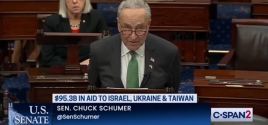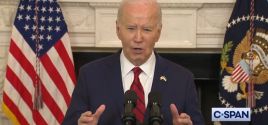Pat Buchanan: Is a Korean Missile Crisis Ahead?Patrick J. BuchananMar. 10, 2017 |
Popular 
Claim Jewish Student Was 'Stabbed In The Eye' by Pro-Palestine Protester Draws Mockery After Video Released

Senate Passes $95B Giveaway to Israel, Ukraine, and Taiwan, Combined With TikTok Ban

Biden Signs Bill to Give $95B to Israel, Ukraine and Taiwan, Ban TikTok

Mistrial Declared in Case of Arizona Rancher Accused of Killing Migrant Trespasser

Sen. Hawley: Send National Guard to Crush Pro-Palestine Protests Like 'Eisenhower Sent the 101st to Little Rock'
 To back up Defense Secretary “Mad Dog” Mattis’ warning last month, that the U.S. “remains steadfast in its commitment” to its allies, President Donald Trump is sending B-1 and B-52 bombers to Korea. Some 300,000 South Korean and 15,000 U.S. troops have begun their annual Foal Eagle joint war exercises that run through April. “The two sides are like two accelerating trains coming toward each other with neither side willing to give way,” says Chinese Foreign Minister Wang Yi, “Are (they) really ready for a head-on collision?” So it would seem. It is Kim Jong Un – 33-year-old grandson of that Stalinist state’s founding father, who launched the first Korean War – who brought on this confrontation. In February, Kim’s half-brother was assassinated in Malaysia in a VX nerve agent attack, and five of Kim’s security officials were executed with anti-aircraft guns. Monday, Kim launched four missiles toward U.S. bases, with three landing in the Sea of Japan. U.S. response: Begin immediate deployment of the Terminal High Altitude Area Defense missile shield in Korea. This set off alarms in China. For while THAAD cannot shoot down Scuds on the DMZ, its radar can detect missile launches inside China, thereby, says Beijing, imperiling her deterrent. For accepting THAAD, China has imposed sanctions on Seoul, and promised the U.S. a commensurate strategic response. Minister Wang’s proposal for resolving the crisis: The U.S. and Seoul cancel the exercises and North Korea suspends the nuclear and missile tests. How did we reach this crisis point? Read More |



